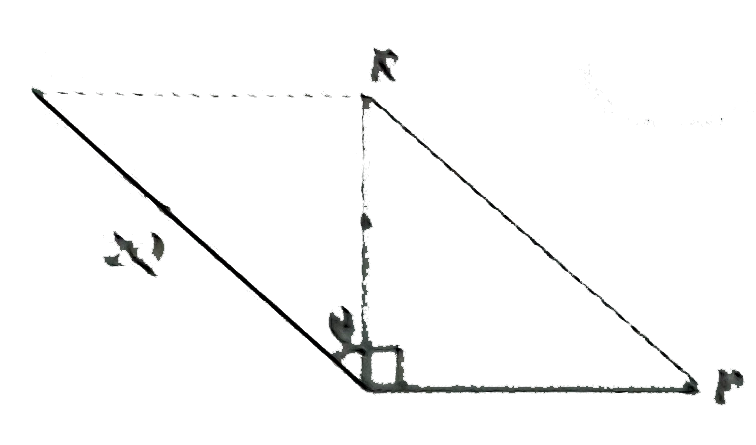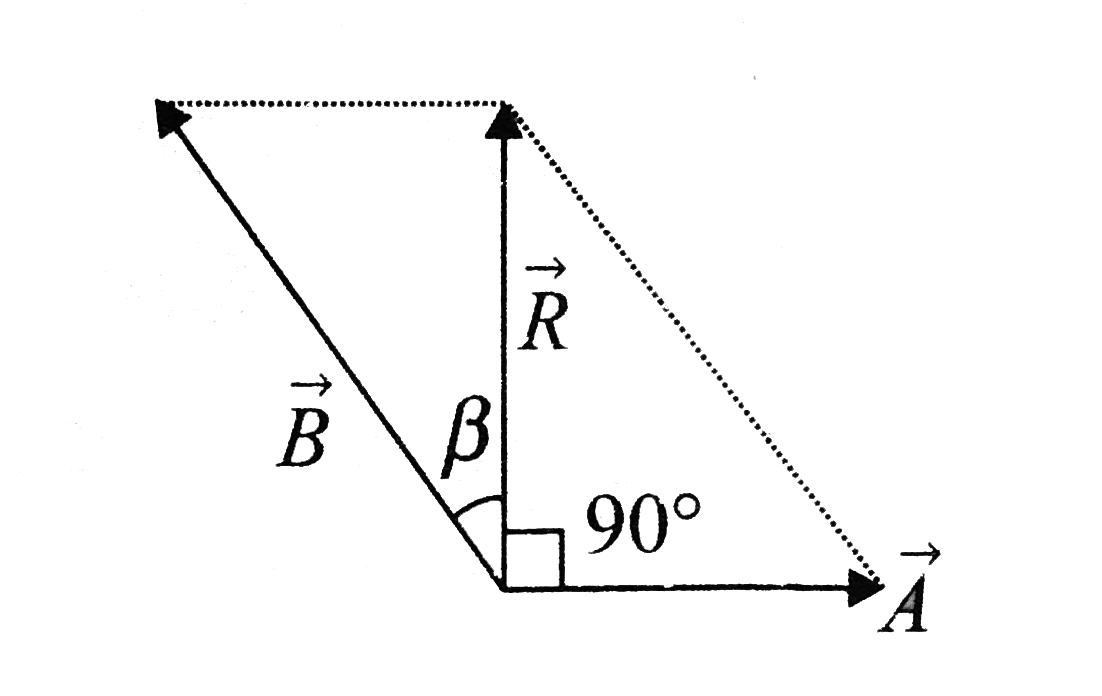The resultant of two vectors →P and →Q is →R. If →Q is doubled then the new resultant vector is perpendicular to →P. Then magnitude of →R is :-
P
(P+Q)
Q
(P−Q)
The correct Answer is:C
(c ) We have 2Qsinθ=P,asR⊥P

Now,R√P2+Q2+2PQcos(90∘+θ)
=√P2+Q2−2PQsinθ
=√(2Qsinθ)2+Q2−2(2Qsinθ)Qsinθ
=√4Q2sin2θ+Q2−4Q2−4Q2sin2θ
Topper's Solved these Questions
Similar Questions
Knowledge Check
- Question 1 - Select One
The resultant of two vectors →P and →Q is →R. If the magnitude of →Q is doubled, the new resultant vector becomes perpendicular to →P. Then, the magnitude of →R is equal to
AP+QBPCP−QDQ - Question 2 - Select One or More
if →P×→R=→Q×→R, then
A→P=→QB→P and →Q need not be equalCThere are infinite number of possibilities for →P (If →Q and →R are given ) which satisfy this relationship.D→p and →Q must be coplanar - Question 3 - Select One
The maximum value of the magnitude of the resultant of two vectors →Pand→Q is 24 units and the minimum value of the magnitude of their resultant is 4 units. What is the ratio of the magnitudes of the vectors →Pand→Q ?
A34B45C65D75
The resultant of two velocity vectors →A and →B is perpendicular to →A. Magnitude of Resultant →R is equal to half magnitude of →B. If the angle between →A and →B is (30θ)∘, then value of θ is ?
View SolutionThe resultant vector of →P and →Q is →R. On reversing the direction of →Q, the resultant vector becomes →S. Show that : R2+S2=2(P2+Q2)
View SolutionThe resultant of forces →P and →Q is →R . If →Q is doubled the →R is doubled . If the direction of →Q is reversed , then →R is again doubled , then P2:Q2:R2 is
View SolutionThe resultant →Pand→Q is perpendicular to →P. What is the angle between →Pand→Q?
View SolutionThe resultant of two vectors →A and →B is perpendicular to the vector →A and its magnitudes is equal to half of the magnitudes of vector →B (figure). The angle between →A and →B is
 View Solution
View Solution

